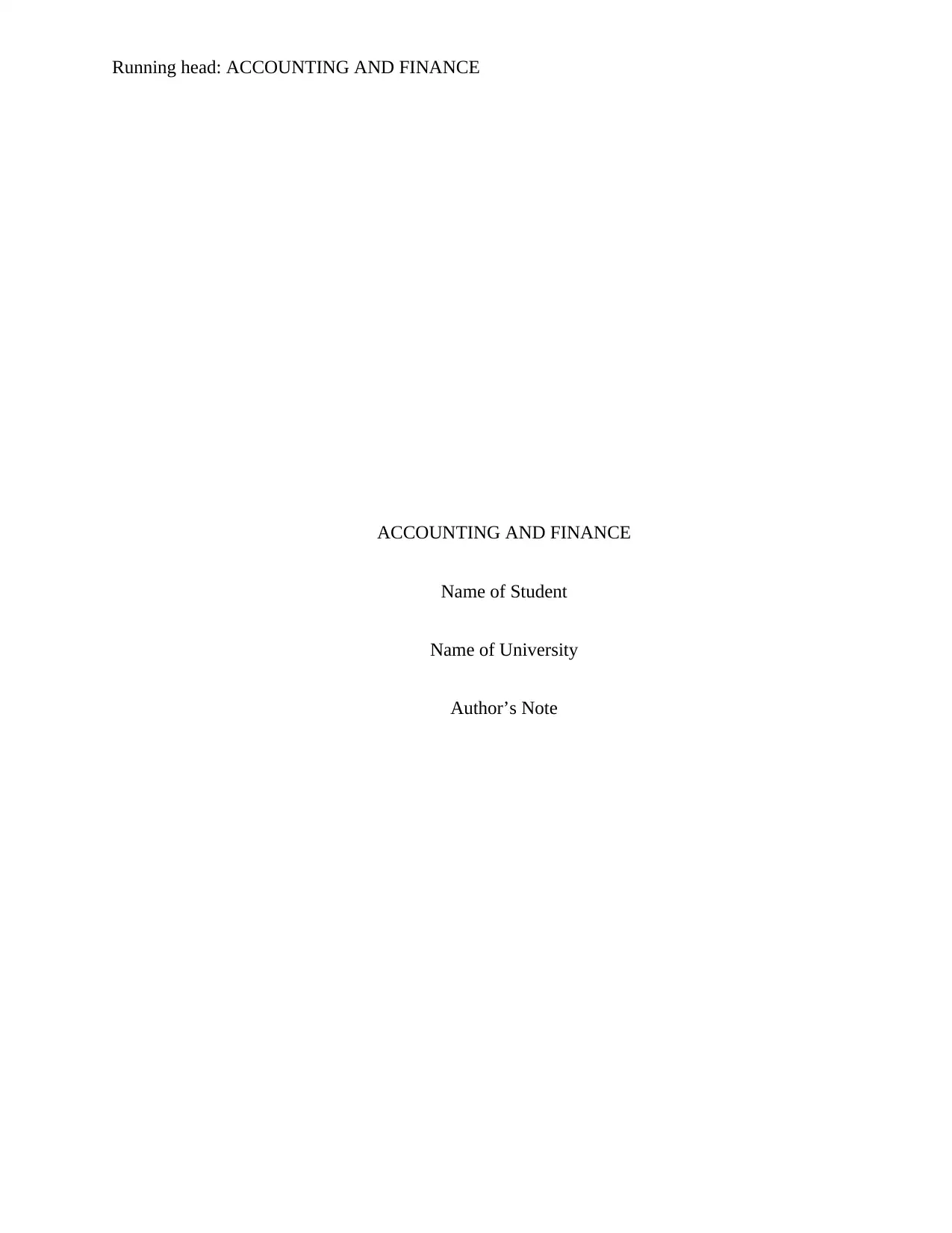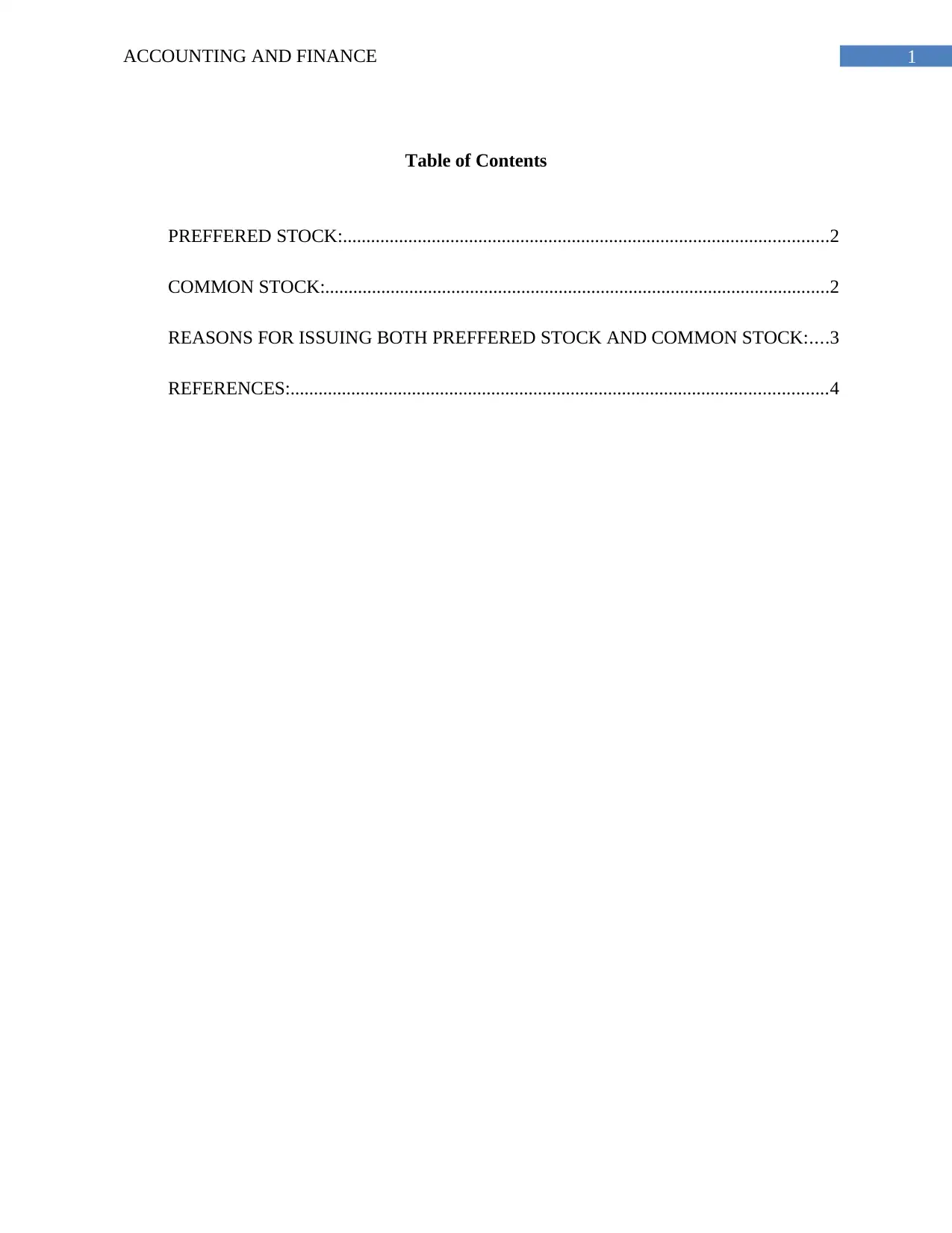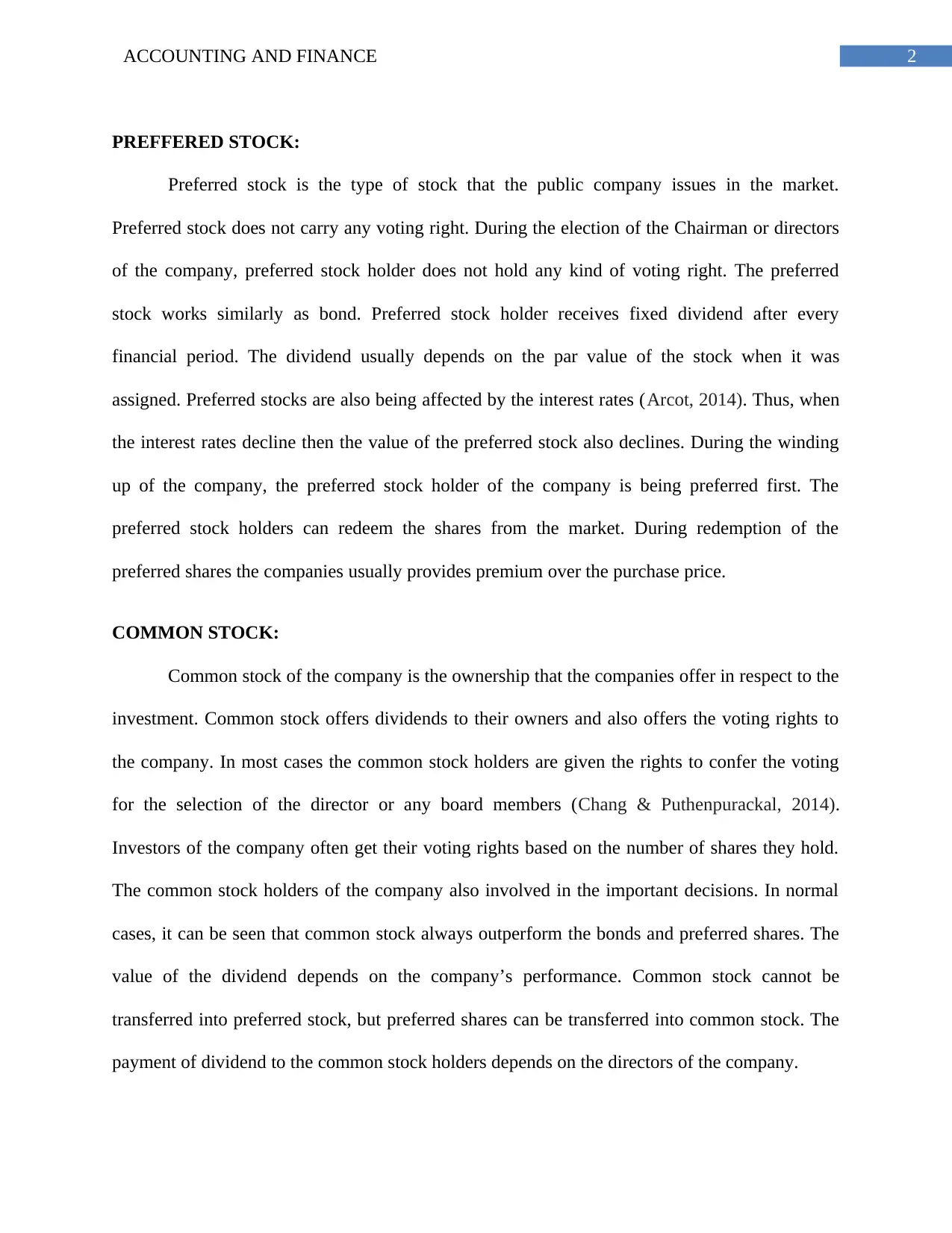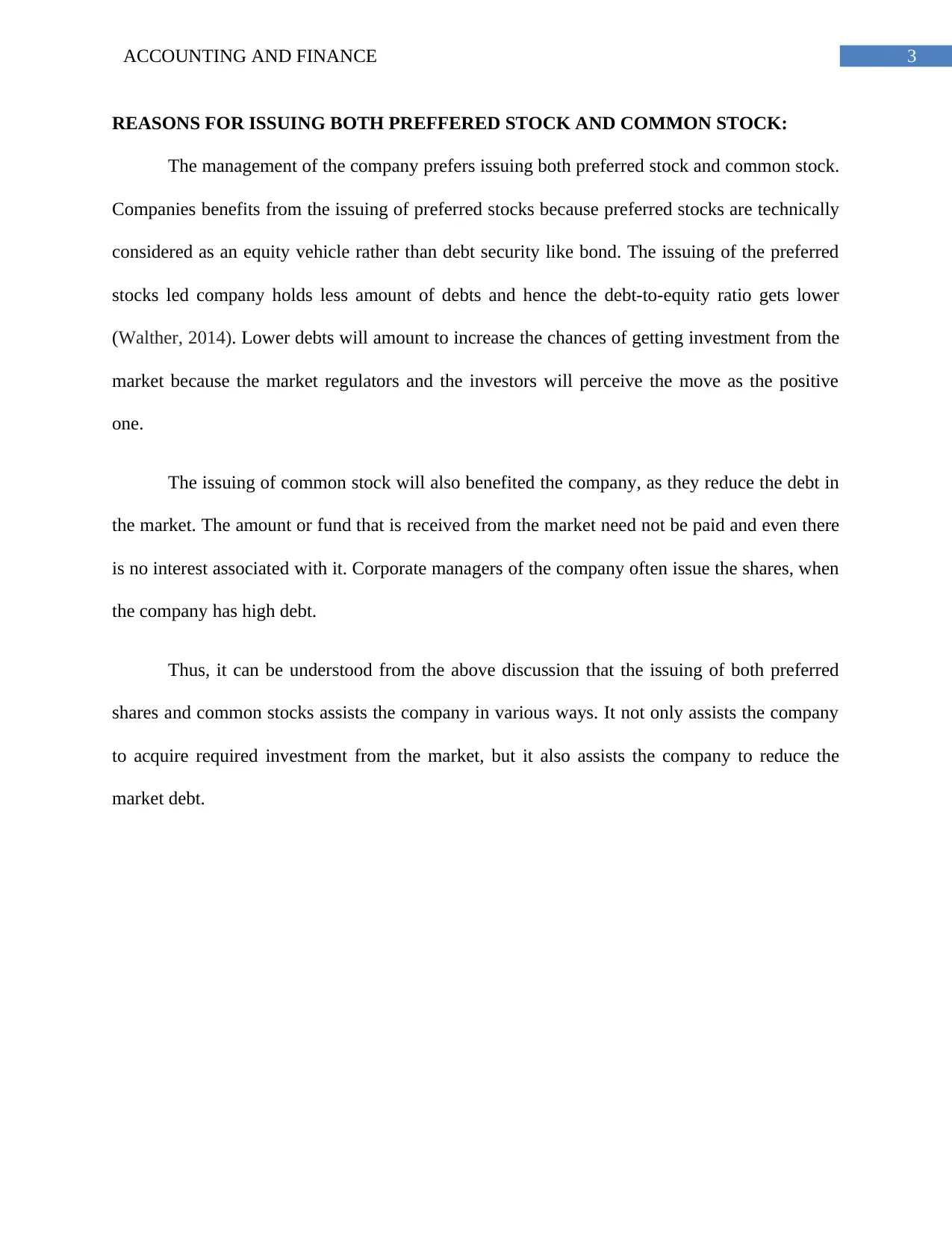University Finance Report: Preferred Stock, Common Stock, and Issuance
VerifiedAdded on 2022/08/17
|5
|733
|396
Report
AI Summary
This report provides a comparative analysis of preferred and common stock, detailing their characteristics and implications for investors and companies. It explains that preferred stock, similar to bonds, offers fixed dividends but lacks voting rights, while common stock grants voting rights and dividends dependent on company performance. The report highlights the reasons for issuing both types of stock, emphasizing the financial benefits such as reducing debt and improving debt-to-equity ratios. Issuing preferred stock is considered as an equity vehicle rather than a debt security, which helps companies acquire investment. Additionally, it discusses the impact of interest rates on preferred stock value and the order of preference during company liquidation. The report references academic sources to support the findings and provides a comprehensive overview of the financial instruments and their strategic importance.
1 out of 5












![[object Object]](/_next/static/media/star-bottom.7253800d.svg)